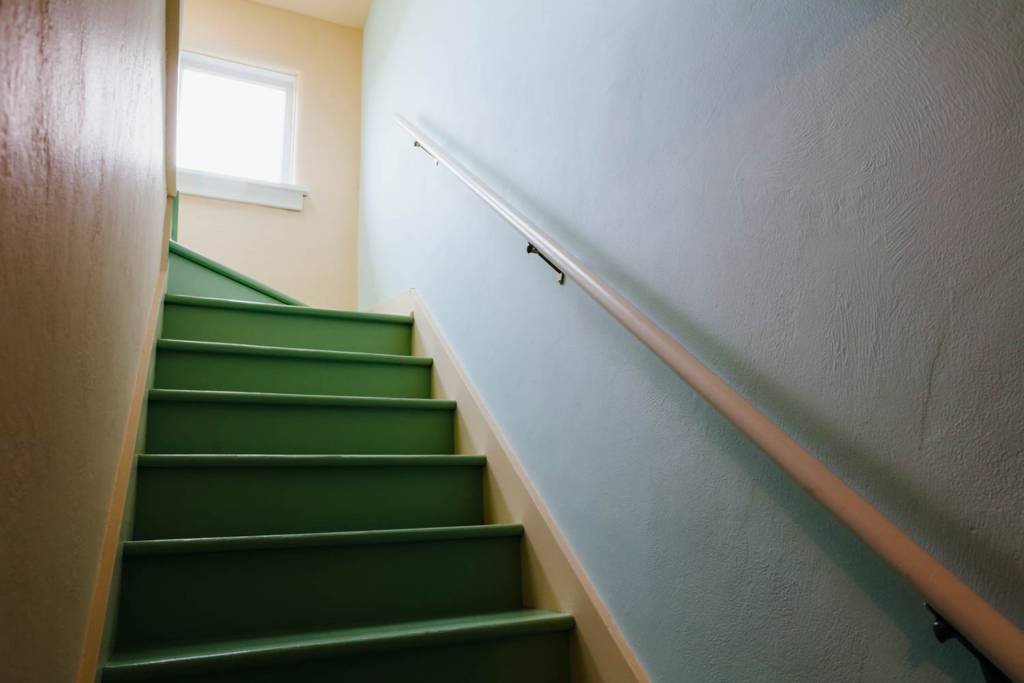Why Is My Upstairs So Hot?

This may hit home:
In the summer, your rooms upstairs get way hotter than the rest of the house, even with the air conditioner running. Then winter comes, and the upstairs temperature drops by five to ten degrees compared to the main floor.
More than almost anything else, our clients tell us about temperature swings between floors. It happens all the time. In this article, we’ll answer the question, “Why is my upstairs so hot?” And more importantly, explain what you can do to finally feel comfortable at home.
If you have any questions about your home, start by giving us a call at (248) 291-7815, or send us a message anytime. We’re here to help.
Hot upstairs, cold downstairs: Why does it happen?
Here’s the first thing to say: Your house isn’t fundamentally flawed. Different parts of your home just have different needs for heating and cooling.
In the summer, we have long days and lots of sun in Michigan. Most of the sun's energy falls directly on the roof. That’s why the roof and attic are always the hottest parts of an average home through the summer months.
Think about it like this - If your upper floor has a sloped or vaulted ceiling, then the rooms up there are only about four inches away from the hottest part of your home. Even if your central air conditioner is in perfect condition, the rooms will need high performing insulation and more cooling than the main floor to feel the same.
Upper rooms are more affected by outdoor conditions than rooms on the main floor. A downstairs room probably has one or two outside walls, but an upstairs room also has the roof and any attic space over it.
Here are the steps we suggest for most homeowners.
- Start by scheduling a home energy audit. It's the simplest and most effective way to figure out exactly how much air sealing and insulation you need to even out the temperatures between floors.
- Seal up the gaps, holes and penetrations in your attic that let in both hot air in the summer and cold air through the winter months. You’ll also need to top off your insulation levels.
- Improve air flow to your upper floor. The most cost effective approach is to seal your ducts and balance the overall duct system. In most cases, this delivers the extra air that you need to get a consistent temperature upstairs.
- If you still have a hot upstairs, cold downstairs in the summer, you may need to install what’s called a “zonal” heating and cooling system such as a ductless heat pump, also known as a ductless mini-split. If all else fails, a ductless heat pump will do the trick.
Every home has its own needs. To see what works best for your home, book an estimate or energy audit, which will give you a full accounting of priorities, costs, and cash incentives. You can reach us at (248) 291-7815 or send us a message anytime.
AC not cooling upstairs: What to do?
1. Find the root causes with a home energy audit
It’s not always easy to know why one floor is so much hotter than another. That’s why we recommend starting with a home energy audit. We spend three to four hours finding the root causes of your comfort issues, so you can feel confident when you're ready to start improving your home.
What does a home energy audit include?
- Visual Inspection: Of course we do a visual inspection of all the nooks and crannies in your home, including the accessible parts of your attic and side attic.
- IR Camera Scan: Taking it to the next level, we use an infrared camera to find the flaws in your insulation and sources of air leakage.
- Blower Door Test: A blower door test allows us to measure exactly how much air is moving through your home. This is a key piece of information because it tells us how much air sealing we need to do. The goal is not to make your home as tight as possible, but rather, we want to hit an optimal range of air tightness - tight enough that you don’t feel uncomfortable, but not so tight that you see issues with mold, mildew, etc.
2. Seal up air leaks and add insulation
Here are three of the most common opportunities for air sealing an average attic in Michigan.
- Recessed Lights: Recessed lights are rarely airtight and can allow a significant amount of hot air from your attic to enter your living space.
- Attic Hatches: Attic hatches are often poorly insulated and sealed, creating a major opening for air leakage for most Michigan homeowners.
- Plumbing Penetrations: Plumbing penetrations are pipes that run from your plumbing fixtures to the roof. We often find sizeable gaps around the penetrations that allow air to flow in and out of the attic.
To reduce air leakage in attics, we seal the leaks with caulk, foam, or weatherstripping. By sealing air leaks, we can prevent hot air in your attic from entering your living space.
This article isn't a deep dive into insulation. Check out our insulation page from more. At a glance, you have a couple of options to insulate your attic, depending on whether or not you need storage.
- If you need storage: We apply closed cell spray foam to your roof deck or attic slope, essentially brining the floor of your side attic inside the conditioned area of your home.
- If you don’t need storage: We insulate attic kneewalls with closed cell spray foam and blow loose fill cellulose insulation onto the floor of your attic. This option is less expensive, but you lose usage of the attic floor for storage.
3. Balance your central air system
Because your upper floor is so much closer to your attic and roof - the hottest parts of your home - you need more airflow up there for the space to feel about the same as your first floor.
When we do a home energy audit, we run a pressure pan test to assess exactly how much air is moving through your vents upstairs. You'd be surprised at how large of a range in airflow we find. Some vents work well, but others barely at all.
Most homeowners in Michigan will see a massive improvement after we clean, seal, and balance the airflow in their duct systems. If cleaning, sealing, and balancing does not do the trick, you will most likely need to add a zonal heating and cooling system, such as a ductless heat pump.
AC not working upstairs: The bottom line
Temperature differences between floors are incredibly common but more fixable than most homeowners realize. If you’re tired of tossing and turning at night in an upstairs bedroom, give us a call: (248) 291-7815. We’re happy to help.

Ecotelligent Homes
Since 2009, more than 3,000 Michigan homeowners have trusted Ecotelligent Homes to make their homes comfortable and efficient. If you want an energy audit, insulation, HVAC, or abatement services, give us a call anytime: (248) 291-7815. Satisfaction guaranteed.
Got a project in mind?
Tell us about your project, and we'll send ballpark pricing in 2 minutes or less.